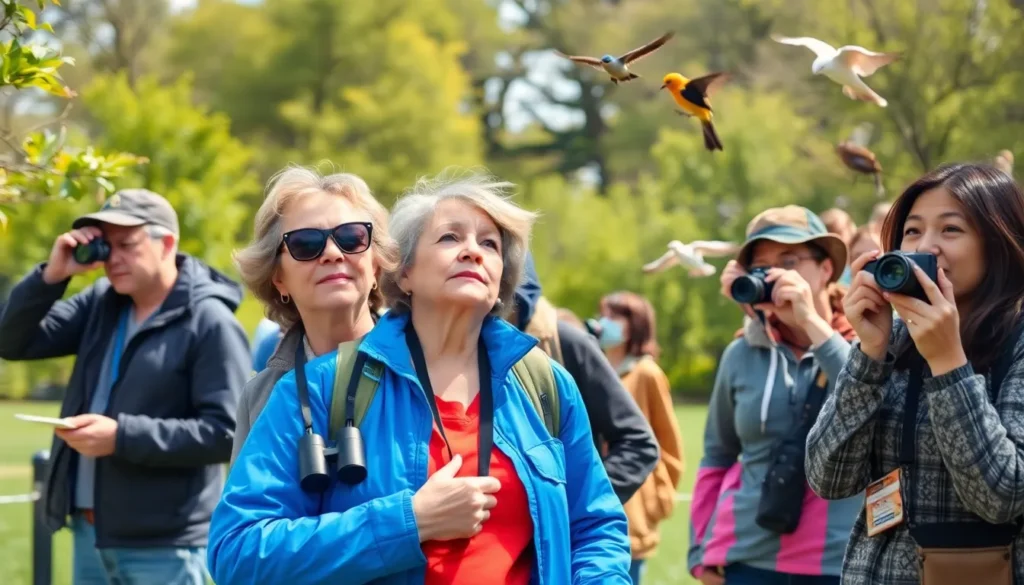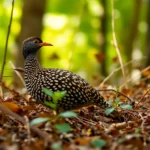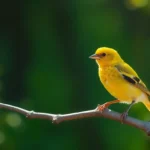Bird watching transforms from a casual hobby into a fascinating scientific pursuit when we dive deeper into bird study. Whether we’re tracking migration patterns in our backyard or conducting formal research, understanding avian behavior opens our eyes to nature’s most incredible aerial performers.
We’ve discovered that studying birds offers far more than identifying species through binoculars. From analyzing complex social structures to monitoring environmental changes, bird research provides crucial insights into network health and climate patterns. These feathered creatures serve as living indicators of our planet’s well-being.
Modern bird study combines traditional observation techniques with cutting-edge technology like GPS tracking and acoustic monitoring. We’re now able to follow individual birds across continents and decode their sophisticated communication systems. This scientific approach to bird watching not only enhances our appreciation for these remarkable animals but also contributes valuable data to conservation efforts worldwide.
What Is Bird Study and Why It Matters
Bird study encompasses the systematic observation and scientific analysis of avian species across multiple disciplines. Ornithologists examine bird behavior, physiology, ecology, and evolutionary patterns to understand how these creatures interact with their environments. Research methods range from field observations and banding programs to advanced genetic analysis and satellite tracking technologies.
Scientists categorize bird study into several key areas that provide comprehensive understanding of avian life:
- Behavioral ecology – examining feeding patterns, mating rituals, territorial behaviors, and social structures
- Migration research – tracking seasonal movements, stopover sites, and navigation mechanisms
- Population dynamics – monitoring breeding success, mortality rates, and demographic changes
- Habitat requirements – analyzing nesting preferences, foraging areas, and environmental dependencies
- Conservation biology – assessing threats, developing protection strategies, and measuring recovery efforts
Bird populations serve as early warning systems for environmental degradation and climate change impacts. A 2019 study published in Science revealed that North America has lost 2.9 billion birds since 1970, representing a 29% decline in total abundance. These losses indicate broader network disruptions affecting air quality, water resources, and habitat stability.
| Environmental Indicator | Bird Response | Impact Assessment |
|---|---|---|
| Air pollution levels | Reduced lung capacity in urban species | 15-20% decrease in respiratory efficiency |
| Climate temperature shifts | Altered migration timing | 2-3 week earlier spring arrivals |
| Habitat fragmentation | Decreased breeding success | 40% reduction in nest survival rates |
| Pesticide contamination | Eggshell thinning | 25% increase in embryonic mortality |
Citizen science programs amplify professional research capabilities by captivating millions of observers worldwide. eBird receives over 100 million bird observations annually from 500,000 active users, creating the largest biodiversity dataset in existence. Christmas Bird Counts have operated for 124 years, providing crucial long-term population trend data that informs conservation decisions.
Modern bird study combines traditional fieldwork with cutting-edge technology to reveal previously hidden aspects of avian life. GPS loggers weighing less than 2 grams track individual birds across entire continents, while acoustic monitoring stations record and analyze thousands of bird vocalizations automatically. Genetic sequencing identifies population structures and migration connectivity patterns that connect breeding and wintering grounds separated by thousands of miles.
Understanding bird ecology directly benefits human communities through network services valued at billions of dollars annually. Birds control agricultural pests, pollinate plants, disperse seeds, and maintain ecological balance across diverse habitats. Our continued study of these remarkable creatures provides essential knowledge for preserving both avian species and the interconnected systems that support all life on Earth.
Essential Equipment for Bird Study

Bird study equipment transforms basic observation into systematic scientific research. We compile specialized tools that enable accurate identification, detailed documentation, and comprehensive data collection across diverse field conditions.
Binoculars and Optical Gear
Binoculars serve as the primary tool for bird observation, with 8×42 and 10×42 configurations providing optimal magnification for field studies. We recommend models with ED (extra-low dispersion) glass that reduces chromatic aberration and delivers sharper images at distances up to 1,000 yards.
Spotting scopes extend observation range for waterfowl research and migration monitoring. These instruments offer 20-60x magnification with 65-85mm objective lenses, enabling detailed behavioral analysis at greater distances. Tripod mounted scopes reduce hand fatigue during extended observation sessions.
Optical specifications determine field performance across varying light conditions. Twilight factor calculations help select binoculars for dawn and dusk studies when many species exhibit peak activity. Exit pupil diameter affects low light performance, with 4-5mm providing ideal brightness for most field conditions.
Field Guides and Identification Resources
Regional field guides provide species exact information including habitat preferences, seasonal distribution, and behavioral patterns. We use guides covering North American birds like Sibley’s, Peterson’s, and National Geographic editions that feature detailed range maps and seasonal plumage variations.
Digital identification apps enhance field research through audio recordings, range data, and real time species lists. Merlin Bird ID and eBird mobile applications integrate GPS coordinates with observation records, contributing data to global databases. These tools include vocalizations for over 2,000 species with spectrograms for acoustic analysis.
Specialized references support focused research areas including raptor identification guides, shorebird manuals, and warbler studies. Academic texts provide detailed morphometric data, molt sequences, and aging criteria essential for banding operations and population studies.
Recording and Documentation Tools
Digital cameras with telephoto lenses document behavioral observations and capture diagnostic features for later analysis. We employ cameras with 400-600mm focal lengths and image stabilization for sharp photographs at distances exceeding 100 feet. High speed burst modes record flight patterns and feeding behaviors.
Audio recording equipment captures vocalizations for species identification and behavioral research. Parabolic microphones and directional recorders isolate individual bird sounds from background noise. Digital formats enable spectrographic analysis using software like Raven Pro and Audacity.
Data collection tools standardize field observations and ensure consistent record keeping. We use weatherproof notebooks, GPS units with 3 meter accuracy, and mobile apps that sync observation data across multiple devices. Standardized forms track species abundance, breeding behavior, and habitat characteristics for long term monitoring programs.
Popular Bird Study Methods
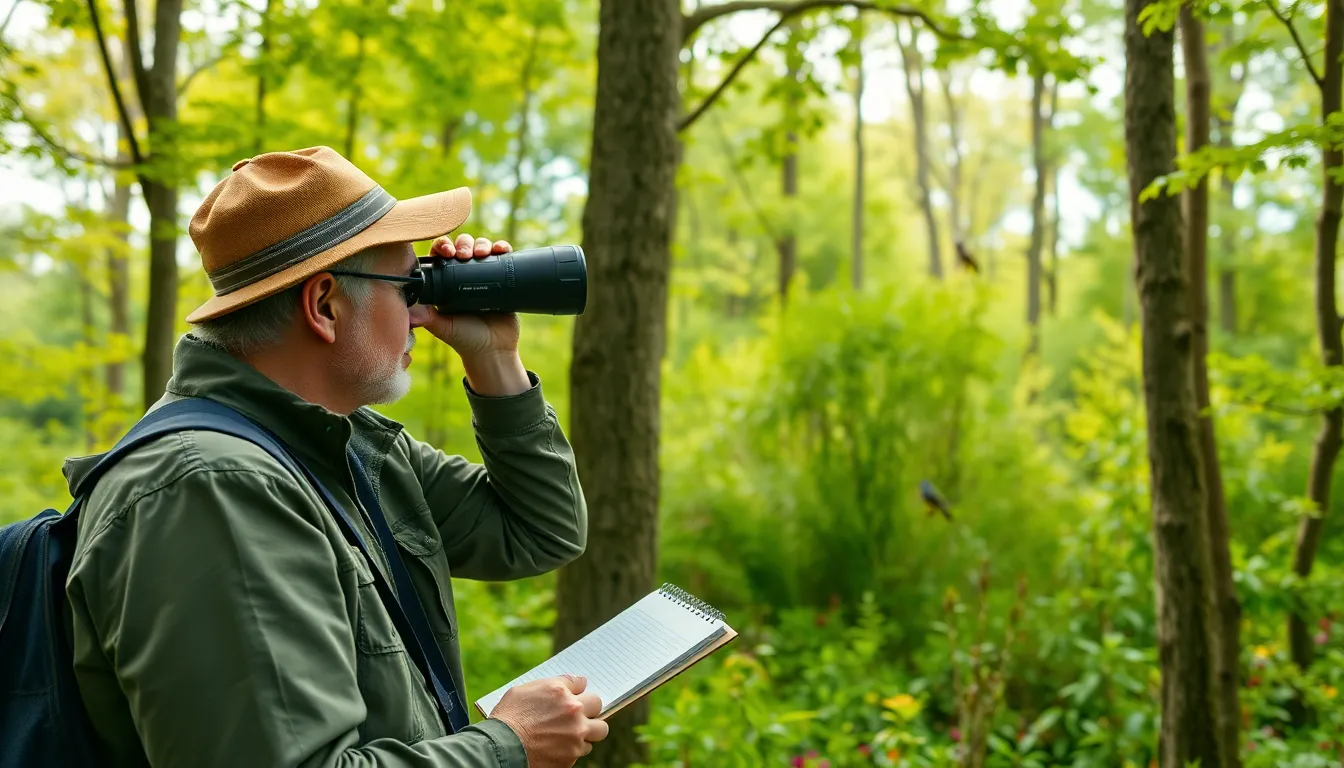
Bird researchers employ diverse methodologies to gather comprehensive data about avian species and their behaviors. These systematic approaches range from traditional observation techniques to advanced technological answers that enhance our understanding of bird populations worldwide.
Field Observation Techniques
Field observation forms the foundation of ornithological research through direct visual and auditory monitoring of birds in their natural habitats. Point counts represent the most standardized method where observers record all birds detected within a fixed radius during predetermined time periods, typically 5 to 10 minutes. Distance sampling techniques allow researchers to estimate bird densities by recording detection distances and applying statistical corrections for visibility bias.
Behavioral mapping captures detailed information about individual bird activities within exact territories. Researchers document feeding patterns, nesting behaviors, territorial disputes, and social interactions using GPS coordinates and time stamps. Transect surveys involve walking predetermined routes while recording bird species, abundance, and environmental conditions along linear pathways.
Mist netting provides opportunities for close examination of birds without permanent capture. Scientists deploy fine mesh nets in strategic locations to safely capture birds for measurements, photographs, and immediate release. Nest monitoring protocols track reproductive success by documenting egg laying dates, clutch sizes, hatching rates, and fledgling survival through regular site visits.
Bird Banding and Tracking
Bird banding creates permanent identification systems that enable long term population studies and individual life history documentation. Metal bands with unique alphanumeric codes allow researchers to identify exact birds across multiple encounters and geographic locations. Color banding schemes use combinations of colored plastic bands to create individually recognizable patterns visible from greater distances.
Radio telemetry employs small transmitters attached to birds to track movement patterns, habitat use, and survival rates. VHF radio tags transmit signals detectable within 1 to 5 kilometer ranges depending on terrain and equipment specifications. Satellite tracking devices provide global positioning data for large birds capable of carrying heavier equipment weighing 3 to 5% of body weight.
GPS loggers store detailed location data internally for later download when birds are recaptured or found. These devices record positions every few seconds to minutes, creating precise movement tracks for analysis. Geolocators estimate locations using light level measurements to determine sunrise and sunset times, providing approximate positions accurate within 150 to 200 kilometers.
Automated radio telemetry stations monitor tagged birds continuously using fixed receiver arrays. Networks of these stations across landscapes create comprehensive databases of bird movements and habitat connectivity patterns.
Citizen Science Projects
Citizen science initiatives engage thousands of volunteers in systematic bird data collection efforts that support professional research programs. eBird serves as the industry’s largest biodiversity citizen science project with over 700 million bird observations submitted by 600,000 users across 250 countries and territories.
Christmas Bird Counts organize annual winter surveys where volunteer teams document bird species and numbers within designated 15 mile diameter circles. These counts have operated continuously since 1900, creating the longest running citizen science dataset in the industry with participation from 80,000 volunteers annually.
Breeding Bird Surveys coordinate systematic monitoring along established roadside routes during peak breeding seasons. Volunteers conduct 3 minute point counts at 50 stops along 24.5 mile routes, generating standardized population trend data used by wildlife agencies for conservation planning.
Project FeederWatch encourages backyard bird enthusiasts to monitor feeder activity during winter months. Participants submit weekly checklists documenting species abundance and behavior patterns that reveal population changes and range shifts. Migration monitoring stations engage volunteers in daily bird banding operations that contribute to continental scale migration research.
BirdLife International coordinates global citizen science networks that connect local birding communities with international conservation efforts. These programs generate over 2 million bird observations annually while building capacity for grassroots conservation action.
Best Locations for Bird Study

Strategic location selection maximizes our research opportunities and data collection efficiency. Diverse environments provide unique insights into different bird species and their behaviors throughout the year.
Urban Bird Watching Opportunities
Cities offer surprising biodiversity for bird study research and provide accessible locations for consistent observation. Central Park in New York City hosts over 200 bird species annually, making it an exceptional urban research site. Parks like Golden Gate Park in San Francisco and Lincoln Park in Chicago demonstrate how urban green spaces concentrate diverse bird populations in relatively small areas.
Rooftop gardens and urban wetlands create microhabitats that attract both resident and migratory species. Office buildings with green roofs in cities like Seattle and Portland support 40% more bird species compared to traditional concrete structures. Urban environments allow us to study adaptation behaviors as birds modify their feeding patterns, nesting habits, and vocalizations in response to city noise and human activity.
Community gardens and urban forests provide year-round research opportunities within metropolitan areas. We observe increased bird activity during dawn and dusk hours in urban settings, with peak diversity occurring between 6-8 AM across most North American cities.
National Parks and Wildlife Refuges
Protected areas concentrate exceptional bird diversity and offer controlled research environments for systematic study. Yellowstone National Park supports 285 documented bird species across its varied ecosystems, from alpine meadows to thermal features. Great Smoky Mountains National Park provides habitat for 240 bird species and serves as a critical research location for studying elevation gradients and species distribution.
Wildlife refuges specifically designed for bird conservation offer unparalleled research access and established monitoring protocols. Bosque del Apache National Wildlife Refuge in New Mexico hosts over 377 bird species and maintains detailed population records dating back to 1939. Point Pelee National Park in Ontario represents Canada’s southernmost point and functions as a critical stopover site for 390 documented bird species.
Research permits at these locations provide access to restricted areas and enable advanced study methods including mist netting and banding operations. Park naturalist programs often collaborate with researchers, sharing decades of observational data and local ecological knowledge that enhances scientific understanding.
Seasonal Migration Hotspots
Migration corridors concentrate millions of birds during exact timeframes, creating extraordinary research opportunities. Point Pelee National Park processes over 100,000 birds annually during spring migration, with peak activity occurring between May 10-20. Hawk Mountain Sanctuary in Pennsylvania documents 18,000+ raptors each fall, providing consistent data for population trend analysis.
Coastal locations like Cape May, New Jersey, and Point Reyes, California, funnel diverse species into concentrated areas during migration periods. Texas Gulf Coast sites record 400+ species during spring migration, with High Island alone documenting 280 species in a single day during optimal weather conditions. Great Lakes shorelines create geographic bottlenecks that concentrate warblers, vireos, and thrushes during both spring and fall movements.
Timing varies by species and location, requiring precise scheduling for optimal research results. Shorebird migration peaks occur 2-3 weeks earlier than songbird movements in most North American flyways. Weather patterns significantly influence migration timing, with cold fronts triggering massive bird movements that researchers can predict and prepare for using meteorological data.
Getting Started With Bird Study
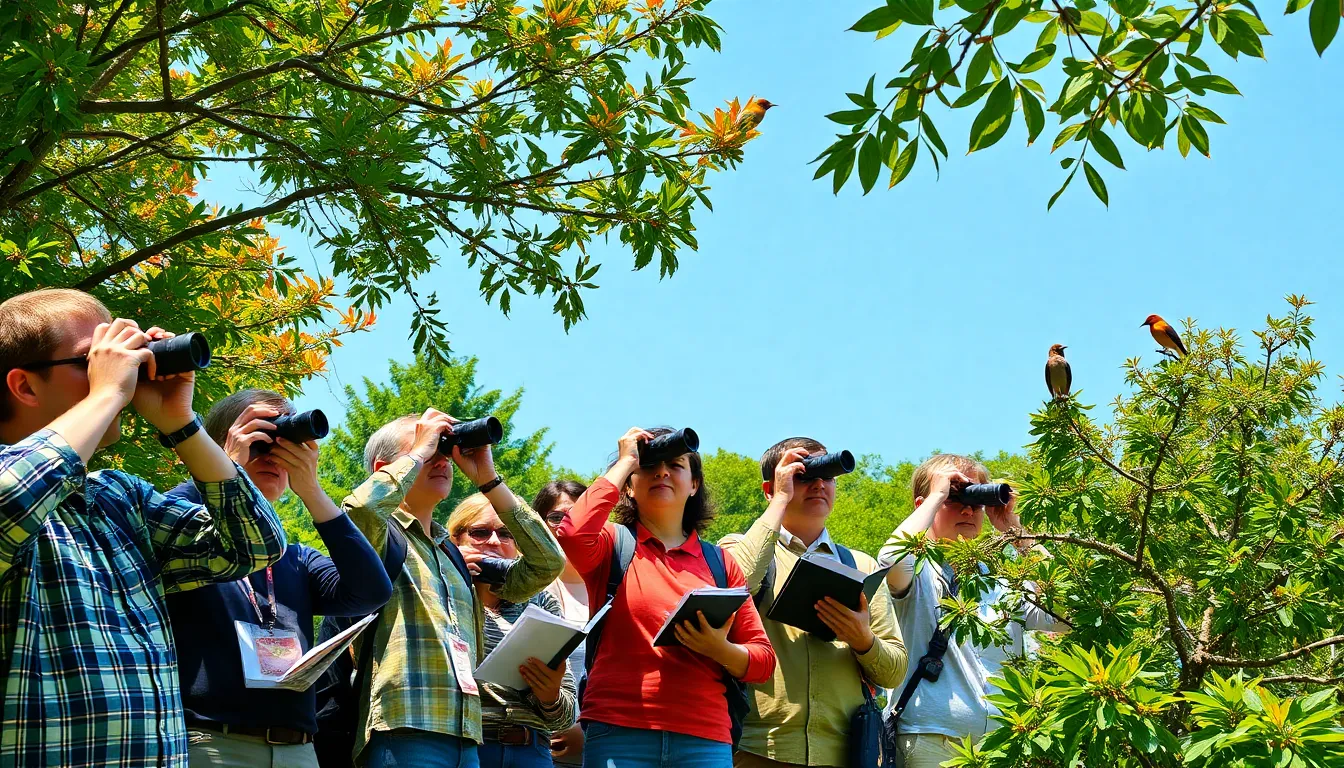
Getting started with bird study requires developing foundational skills that transform casual observation into meaningful scientific research. We build expertise through systematic practice and community engagement that accelerates our learning process.
Building Identification Skills
Building identification skills forms the cornerstone of effective bird study research. We begin by learning basic bird anatomy terminology including crown, nape, mantle, coverts, and primaries to accurately describe physical characteristics. Field marks such as size comparison, bill shape, leg color, and distinctive plumage patterns provide reliable identification criteria across different species.
Visual recognition improves through consistent practice with common species before advancing to challenging identifications. We focus on 10-15 abundant local species first, mastering their field marks in various lighting conditions and seasons. Behavioral cues including feeding patterns, flight styles, and habitat preferences supplement physical characteristics for accurate identification.
Size comparison techniques use familiar reference birds such as sparrows, robins, and crows to estimate unknown species dimensions. We develop systematic observation patterns examining birds from head to tail, noting distinctive features in sequence. Digital photography captures detailed images for later analysis when field conditions prevent immediate identification.
Seasonal variation affects identification accuracy as molting patterns change bird appearances throughout the year. We study juvenile, breeding, and winter plumages for target species to recognize variations. Vocalization patterns provide additional identification tools, with many species having distinctive calls and songs that aid recognition.
Joining Local Birding Communities
Joining local birding communities accelerates our learning curve through shared expertise and organized field experiences. Audubon Society chapters exist in most regions, offering regular bird walks led by experienced naturalists. These groups provide mentorship opportunities where beginners learn advanced identification techniques from seasoned observers.
Local birding clubs organize monthly meetings featuring guest speakers, research presentations, and seasonal migration updates. We access specialized knowledge about regional species, prime viewing locations, and optimal timing for different bird activities. Christmas Bird Counts and breeding bird surveys offer structured volunteer opportunities that contribute to scientific databases.
Online platforms such as eBird help connection with local birders through shared sightings and location recommendations. Regional Facebook groups and birding forums provide real-time updates about rare species sightings and migration timing. We gain access to specialized knowledge about local hotspots that aren’t widely publicized.
Mentorship relationships develop naturally within birding communities as experienced members share decades of accumulated knowledge. We learn proper field etiquette, including maintaining appropriate distances from sensitive species and minimizing disturbance to nesting birds. Group dynamics improve our observation skills as multiple observers spot different species simultaneously.
Creating a Life List
Creating a life list establishes systematic documentation that tracks our ornithological progress over time. We record species, dates, locations, and behavioral observations for each sighting to build comprehensive personal databases. Digital platforms like eBird automatically generate life lists while contributing data to global citizen science projects.
Species accounts include detailed notes about habitat preferences, weather conditions, and associated species observed simultaneously. We document subspecies variations when identifiable to create more detailed scientific records. Photographic evidence supports uncertain identifications and provides reference materials for future comparisons.
Geographic organization divides life lists into regions such as county, state, national, and international categories. We track yearly totals to monitor our identification improvement and seasonal birding activity levels. Specialized lists including yard birds, vacation species, and life birds seen during exact activities provide focused documentation approaches.
Quality control measures verify identifications through multiple sources including field guides, expert consultation, and photographic evidence. We update records as taxonomic classifications change and new species splits occur. Digital backup systems prevent data loss while synchronizing records across multiple devices and platforms.
Advanced Bird Study Techniques
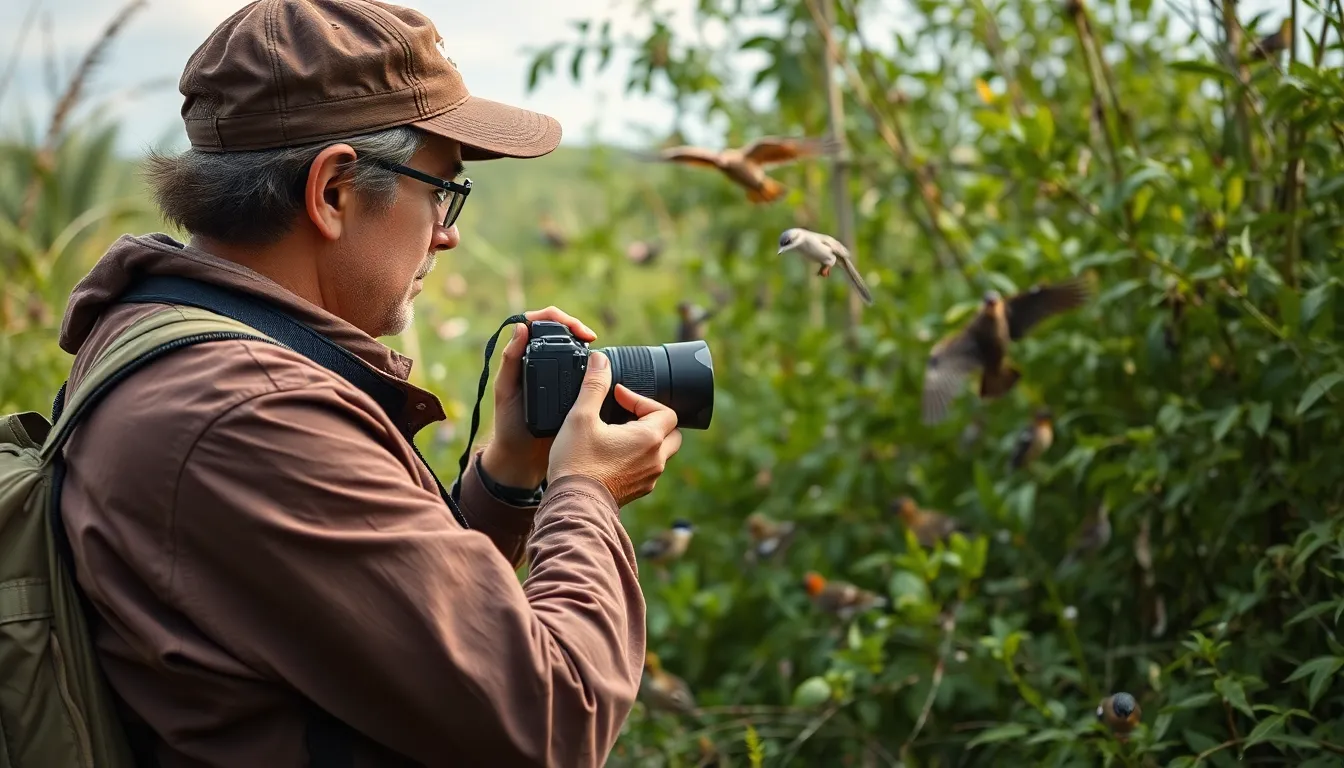
Advanced techniques transform systematic observation into comprehensive research that generates actionable conservation data. These methodologies integrate cutting-edge technology with traditional field research to produce detailed insights about avian populations and network health.
Photography and Behavioral Documentation
Photography serves as our primary tool for creating permanent behavioral records that support long-term research initiatives. High-resolution cameras capture minute details of feeding behaviors, courtship displays, and social interactions that contribute to behavioral ecology databases. Canon EOS R7 and Nikon D500 models excel in bird photography due to their fast autofocus systems and extended battery life during field sessions.
Behavioral mapping combines photographic documentation with systematic recording protocols to track individual bird movements within defined territories. This technique involves photographing the same individuals at exact time intervals while recording GPS coordinates, weather conditions, and habitat characteristics. Researchers document approximately 15-20 behavioral categories including foraging patterns, territorial disputes, nest building activities, and predator responses.
Video documentation captures complex behaviors that static images cannot fully represent. Modern mirrorless cameras record 4K footage at 60 frames per second, enabling researchers to analyze wing movement patterns, feeding mechanics, and social hierarchies through frame-by-frame analysis. Time-lapse photography reveals nesting behaviors over extended periods, documenting incubation cycles and chick development stages.
Standardized photography protocols ensure consistency across research teams and geographic locations. Each photographic record includes metadata containing species identification, exact location coordinates, time stamps, weather conditions, and associated behavioral observations. Digital asset management systems organize thousands of images using taxonomic classifications and behavioral tags for efficient data retrieval.
Habitat Assessment and Conservation
Habitat assessment protocols provide quantitative data about environmental conditions that influence bird population dynamics. Vegetation sampling measures plant species diversity, canopy coverage percentages, and understory density within designated study plots. Standard quadrat sampling techniques collect data from 10-meter square sections, recording plant heights, coverage estimates, and seasonal phenology changes.
Water quality monitoring evaluates aquatic habitats that support waterbird populations and their prey species. pH levels, dissolved oxygen concentrations, turbidity measurements, and nutrient content affect food availability and nesting success rates. Portable testing equipment measures these parameters monthly during breeding seasons and migration periods.
Invasive species documentation identifies non-native plants and animals that alter habitat structure and food webs. European starlings, house sparrows, and invasive plant species like purple loosestrife significantly impact native bird communities. Research protocols involve mapping invasive species distributions, calculating coverage percentages, and monitoring their expansion rates over multiple breeding seasons.
Conservation implementation applies research findings to habitat restoration projects that benefit target bird species. Native plant restoration increases insect abundance by 340% compared to non-native landscapes, directly supporting insectivorous bird populations. Wetland restoration projects create breeding habitat for waterfowl while providing flood control and water filtration services worth $23 billion annually across North America.
Habitat connectivity analysis examines industry corridors that help bird movement between fragmented habitats. GIS mapping software identifies potential corridor locations while considering urban development patterns, agricultural practices, and existing protected areas. Research demonstrates that habitat corridors increase bird species richness by 23% in fragmented landscapes compared to isolated patches.
Benefits of Bird Study for Science and Personal Growth
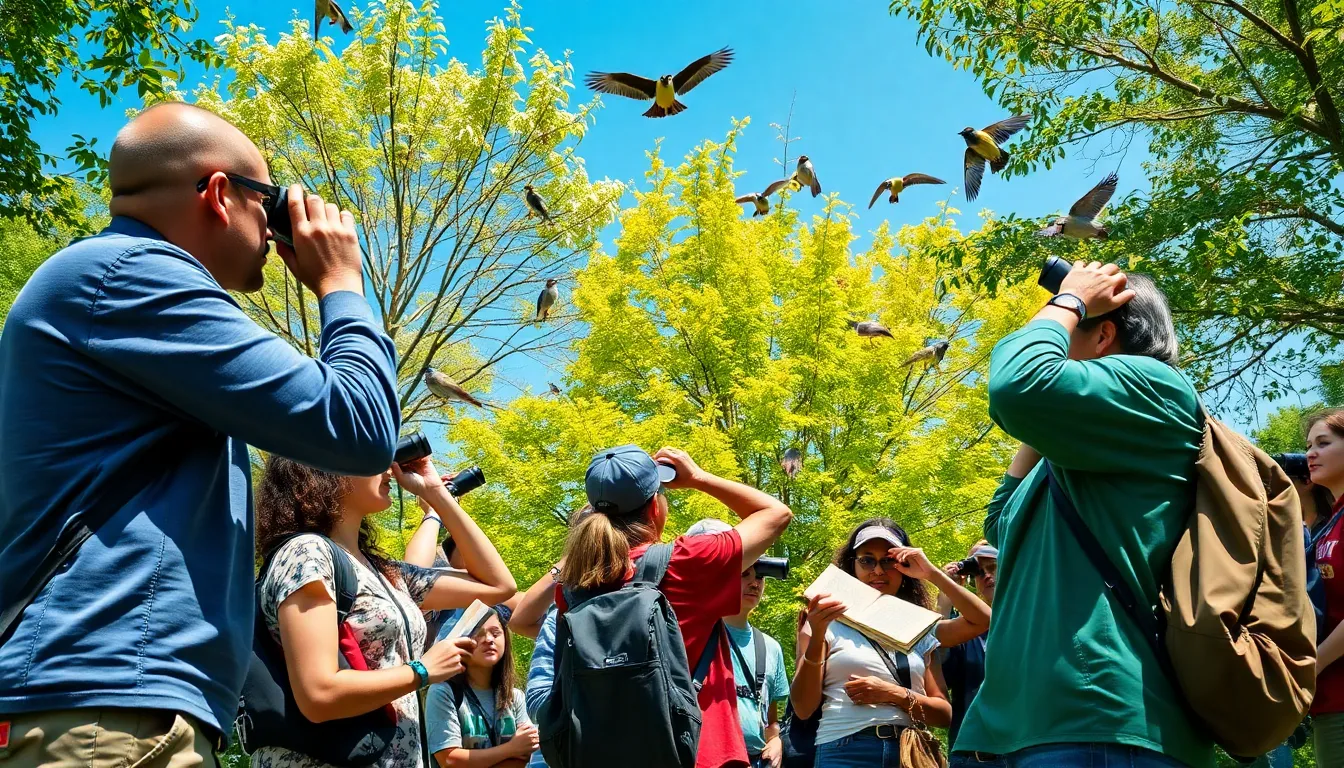
Bird study transforms our understanding of ecological systems while fostering deep personal connections with the natural industry. Scientific research through systematic bird observation generates critical data about network health, climate change impacts, and biodiversity patterns that inform conservation strategies worldwide. Researchers document species population trends that serve as early warning indicators for environmental degradation, with studies showing consistent correlations between bird population declines and habitat loss across multiple continents.
Conservation efforts benefit directly from comprehensive bird study data, enabling targeted protection strategies for endangered species and critical habitats. Professional ornithologists track migration patterns to identify stopover sites requiring conservation priority, while population monitoring reveals species recovery success rates following habitat restoration projects. Community scientists contribute millions of observations annually through platforms like eBird, creating datasets that support peer-reviewed research and policy development at national and international levels.
Personal development flourishes through regular bird study practice, improving observation skills, patience, and scientific thinking abilities. Participants develop heightened awareness of seasonal changes, weather patterns, and ecological relationships that deepen environmental literacy. Field research builds physical fitness through outdoor activities while reducing stress levels and improving mental health outcomes documented in multiple studies examining nature-based activities.
Educational outcomes from bird study extend beyond ornithology into broader scientific disciplines including ecology, statistics, geography, and environmental science. Students develop data collection and analysis skills through standardized monitoring protocols, creating transferable research abilities applicable across academic fields. Field experience teaches identification techniques that sharpen visual discrimination and pattern recognition skills useful in various professional contexts.
| Benefit Category | Scientific Impact | Personal Growth |
|---|---|---|
| Data Collection | Species population trends | Enhanced observation skills |
| Conservation | Habitat protection priorities | Environmental awareness |
| Research Skills | Statistical analysis methods | Critical thinking development |
| Community Impact | Citizen science contributions | Social connections through birding groups |
Technological integration in modern bird study accelerates scientific discovery while making research accessible to broader audiences. GPS tracking data reveals previously unknown migration routes and timing patterns that reshape our understanding of continental flyways. Acoustic monitoring systems capture vocalizations that identify species presence in remote locations, expanding research capacity beyond traditional visual observation methods.
Long-term monitoring programs demonstrate measurable benefits for both scientific knowledge and participant engagement levels. Christmas Bird Count data spanning over 120 years provides the longest-running citizen science dataset in the industry, revealing climate change impacts on species distributions and abundance patterns. Breeding Bird Survey protocols standardize data collection methods across thousands of routes, creating consistent datasets that support trend analysis and population modeling efforts.
Professional development opportunities emerge from dedicated bird study participation, with many researchers beginning their careers through volunteer monitoring programs. Field experience gained through systematic observation builds credentials for graduate study applications and natural resource career paths. Network connections formed through birding communities often lead to research collaborations and mentorship opportunities in ornithological fields.
Conclusion
Bird study represents one of the most accessible yet scientifically valuable pursuits we can undertake. Whether we’re contributing data through citizen science programs or conducting detailed behavioral research with advanced technology the impact extends far beyond personal enrichment.
The field continues evolving as new tools and methodologies emerge allowing us to uncover deeper insights into avian ecology and behavior. Our collective efforts whether as weekend observers or dedicated researchers directly support global conservation initiatives that protect both bird populations and the ecosystems we all depend on.
Starting your bird study journey today means joining a worldwide community of researchers and enthusiasts who are actively shaping our understanding of the natural industry while experiencing the profound personal benefits this scientific discipline offers.
Frequently Asked Questions
What is bird study and how does it differ from casual bird watching?
Bird study is the systematic observation and scientific analysis of avian species across various disciplines, including behavioral ecology, migration research, and conservation biology. Unlike casual bird watching, it involves structured data collection, standardized methodologies, and contributes to scientific research and conservation efforts.
Why are birds important indicators of environmental health?
Birds serve as early warning systems for environmental changes because they’re highly sensitive to habitat alterations, pollution, and climate shifts. A 2019 study revealed a 29% decline in North American bird populations since 1970, demonstrating their role as indicators of ecosystem health and biodiversity loss.
What essential equipment do I need to start bird study?
Basic equipment includes quality binoculars (8×42 recommended), regional field guides, a notebook for documentation, and a digital camera. Advanced researchers may use spotting scopes, audio recording equipment, GPS devices, and mobile identification apps to enhance their systematic observations and data collection.
What are the most effective bird study methods for beginners?
Beginners should start with point counts, behavioral mapping, and transect surveys. These foundational techniques involve systematic observation at fixed locations or along predetermined routes, allowing for consistent data collection while building identification skills and understanding of local bird communities.
Where are the best locations for conducting bird study?
Prime locations include national parks, wildlife refuges, urban green spaces, and seasonal migration hotspots. Areas like Yellowstone National Park and migration corridors offer rich biodiversity and established monitoring protocols, while urban environments provide surprising species diversity and accessible research opportunities.
How can I contribute to scientific research as a citizen scientist?
Participate in programs like eBird, Christmas Bird Counts, and Breeding Bird Surveys. These citizen science initiatives collect valuable data that supports professional research, conservation planning, and policy development while providing opportunities to learn from experienced researchers and contribute to global databases.
What technology is revolutionizing modern bird study?
GPS tracking, acoustic monitoring equipment, digital photography, and mobile apps are transforming bird research. These technologies enable detailed migration tracking, vocal pattern analysis, and real-time data sharing, expanding research capabilities beyond traditional observation methods while maintaining scientific rigor.
How does bird study benefit personal development and mental health?
Bird study enhances observation skills, environmental awareness, and scientific literacy while providing mental health benefits through outdoor activities and nature connection. It develops patience, attention to detail, and critical thinking skills while fostering community connections with fellow researchers and conservationists.

